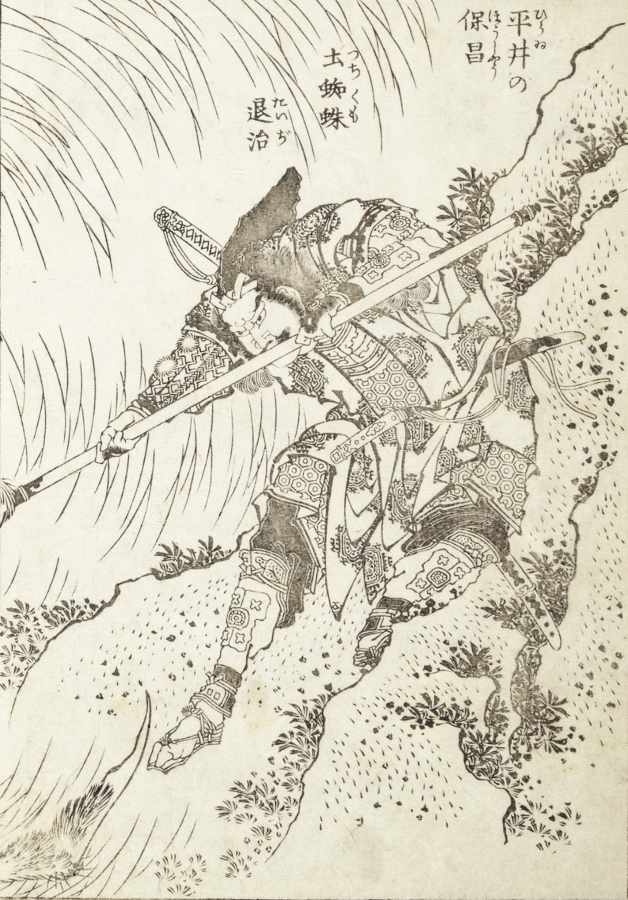Seventy-six-year-old Hokusai drew a series of warrior images that included the figures above: Hirai Yasumasa (958–1036) subduing a monster spider, Tsuchigumo. Lines in the background trace the motion of the gigantic arachnid as it tumbles and its sickle-like legs flail in the air, emphasizing the movement and force in a way that resonates with the visual effects of modern manga. This image is dynamic; and yet it gives the impression of a perfectly paused still-frame — the monster’s eyes meeting our own — as the moment is immortalized. This scene is part of a woodblock-printed book by Hokusai, titled Wakan ehon sakigake, which assembles images of famous Japanese and Chinese warriors, both historical and legendary.
| Alias Hirai Yasumasa |
| Real Names/Alt Names Hirai Yasumasa |
| Characteristics Hero, Samurai, Literary Characters, Medieval Age |
| Creators/Key Contributors ○ |
| First Appearance Historical figure (b. 958 – d. 1036) |
| First Publisher Katsushika Hokusai |
| Appearance List Konjaku Monogatari-shū (c. 1120), Uji Shūi Monogatari (early 13th century), Otogi Zōshi (Muromachi period, 14th–16th centuries), Hakamadare (Noh, 14th–15th centuries), Wakan Ehon Sakigake (Picture Book of Chinese and Japanese Warriors, 1836) by Katsushika Hokusai, One Hundred Aspects of the Moon: Hirai Yasumasa (1886) by Tsukioka Yoshitoshi, Teito Monogatari (1985–1987) by Hiroshi Aramata. |
| Sample Read Wa-Kan ehon sakigake [Internet Archive] |
| Description Seventy-six-year-old Hokusai drew a series of warrior images that included the figures above: Hirai Yasumasa (958–1036) subduing a monster spider, Tsuchigumo. Lines in the background trace the motion of the gigantic arachnid as it tumbles and its sickle-like legs flail in the air, emphasizing the movement and force in a way that resonates with the visual effects of modern manga. This image is dynamic; and yet it gives the impression of a perfectly paused still-frame — the monster’s eyes meeting our own — as the moment is immortalized. This scene is part of a woodblock-printed book by Hokusai, titled Wakan ehon sakigake, which assembles images of famous Japanese and Chinese warriors, both historical and legendary. |
| Source Hokusai Warriors – The Public Domain Review |

